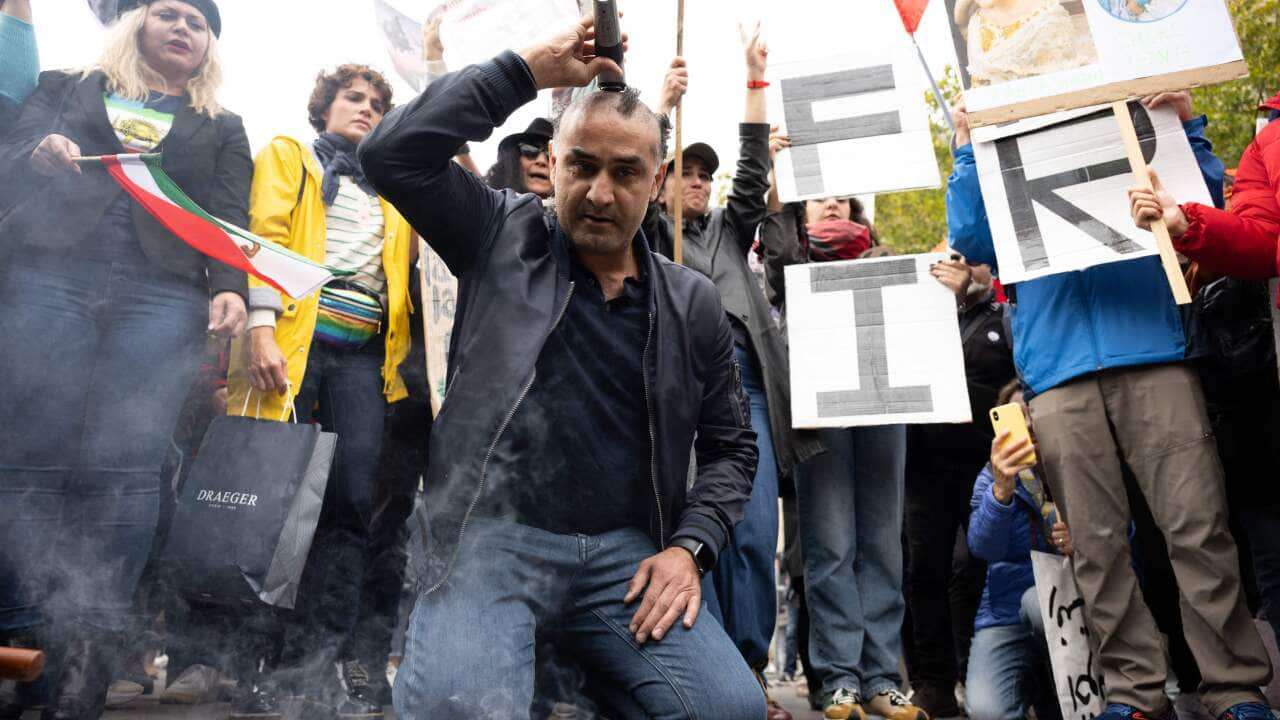Key points
- Iranian protesters are knocking turbans off the heads of clerics in a new trend that has gone viral online.
- Removing the turban has become a symbol of anti-government resistance as civil unrest in Iran continues to grow.
- While advocates have applauded the game, others have described it as disrespectful.
A new trend has emerged online of Iranian protesters knocking off the turbans of clerics in the latest act of resistance against the government.
Scores of videos have been posted online of people sneaking up behind men walking in public, knocking the turban off their heads, and running away.
The unique form of protest is spurring the intensifying civil unrest that has swept Iran for five weeks since the .
Ms Amini died in custody on 16 September after being arrested by the morality police for allegedly not wearing her hijab properly.
The trend is being described as a "game" or "sport", with protesters even establishing a dedicated "Iranian Turban Throwing Federation" Twitter account that has reached nearly 38,000 followers.
The account shares videos of people knocking off turbans, creating fake tournaments, and humorously scoring their hitting and escaping technique out of 10.
While the turban is more widely worn in Sikh communities, it is still worn by some Muslims in countries like Iran and Afghanistan for cultural reasons.
While many social media users have applauded the bravery of young protesters knocking off the turbans, others have criticised the approach as disrespectful.
"Do you think it would be funny to do the same with a Jewish man's kippah?" a Twitter user asked.
Critics of the movement have expressed their disappointment in the turban-hitting trend, stating that the anti-regime protests should not become violent or harmful towards other people's clothing choices.
It prompted Iraqi politician and cleric Muqtada al-Sadr to condemn the trend, describing it as a "ferocious attack" against the removal of turbans and hijabs from people who choose to wear the garments.
Mr al-Sadr warned the trends growing traction could spread to other countries, risking the incitement of violence against women who wear the hijab, too.
"Those who call for freedom and rights, prevent decent women and men with turbans from wearing what they want," he said in a statement on Monday. "Assaulting them despite the fact that they are not in power, nor in politics, nor have money."
With no signs of the unrest slowing down, Iranian parliamentarians have urged the judiciary to "deal decisively" with perpetrators of unrest as the Islamic Republic struggles to suppress the biggest show of dissent in years.
Iran's judicial spokesperson Masoud Setayeshi confirmed on Tuesday that 1,000 protesters have been arrested in the "riots" since Ms Amini's death.
The Human Rights Activists News Agency said that 318 protesters had been killed in the unrest as of Saturday, including 49 children.
Thirty-eight members of the security forces had also been killed, it added.
State media said last month that more than 46 security forces, including police, had been killed.
With AAP










